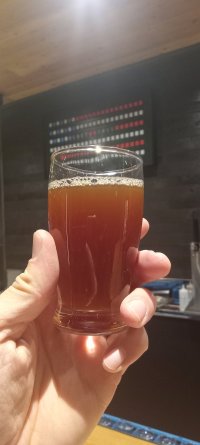pvtpublic
Whale Oil Beef Hooked
- Joined
- Feb 19, 2011
- Messages
- 1,303
- Reaction score
- 1,666
I'm on my second batch of brown ale. I have done everything exactly the same as the first time, I've even hit the same numbers. I've built the water exactly the same, everything seems to be the same. The problem is that the color, and therefor the flavor is incredibly different. The first batch was almost perfect beer, the second, turned out the color of Sierra Nevada pale ale.
Strike with 120gal RO @ 168*F, 150mL LA, 202g gypsum, 88g epsom, 20g salt, 3g CaCl
Target temp 154*F for 90 min
Grist
Pale 2-row 70%
Carapils 8%
Wheat malt 7.5%
Crystal 30 6.3%
Crystal 120 2.5%
Roasted wheat 2.5%
Munich 60 1.8%
Roasted barley 1.3%
The two roasted malts are added at the last 15 min of the mash and recirculated.
What could have caused this?
Strike with 120gal RO @ 168*F, 150mL LA, 202g gypsum, 88g epsom, 20g salt, 3g CaCl
Target temp 154*F for 90 min
Grist
Pale 2-row 70%
Carapils 8%
Wheat malt 7.5%
Crystal 30 6.3%
Crystal 120 2.5%
Roasted wheat 2.5%
Munich 60 1.8%
Roasted barley 1.3%
The two roasted malts are added at the last 15 min of the mash and recirculated.
What could have caused this?







